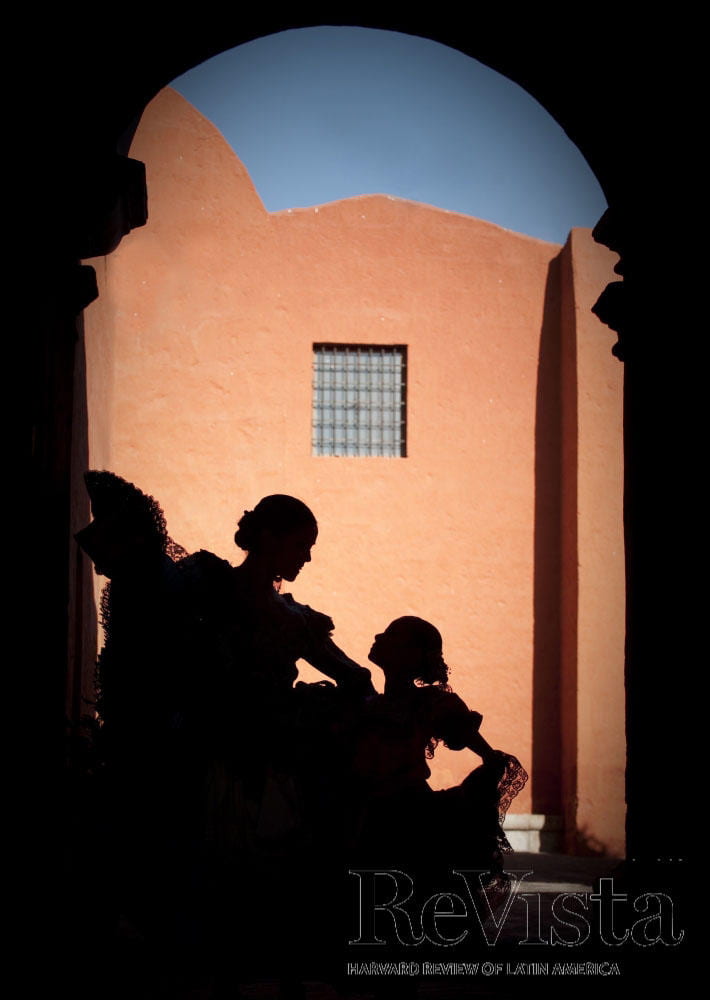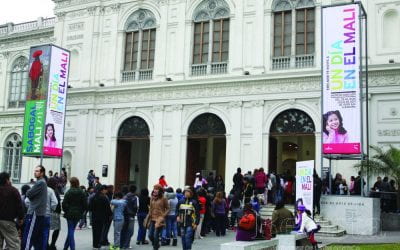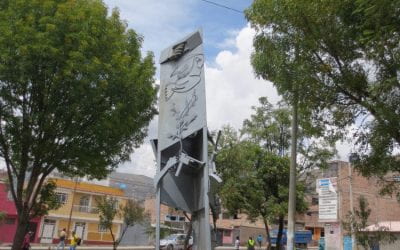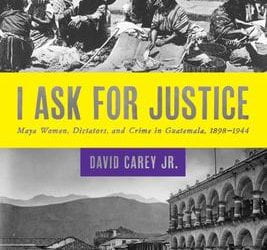First Do No Harm
Enforced Sterilizations and Gender Justice in Peru

Gender mainstreaming has become a crucial issue in the carrying out of justice in Peru. Photo by Renzo Nuñes Melgar/”Los rostros del peru”-Ojos Propios/Reniec.
In 1997, I set out with a research team to rural communities in Ayacucho to conduct a needs assessment for Health Net International. Although our focus was on primary health care, it was impossible to ignore the central concern of many women and their loved ones. Something was terribly wrong.
There was a little boy who came to me for help because his mother could no longer walk following her visit to the health post. The family had to cart her around atop their small mule: “Doctora, can’t you do something for my mom?” There was a nurse practitioner in Cangallo who approached me in a quasi-confessional manner, motivated by the guilt that had accompanied her since participating in a Tubal Ligation Festival. Along with other staff from the Ministry of Health (MINSA), she had spent two days in makeshift operating rooms, sterilizing 147 women. At some point, the team realized they did not have a sufficient quantity of anesthesia, and collectively decided to continue with the surgeries. The women began screaming in pain, alarming the others crowded into the waiting room. Hospital attendants slid padlocks through the doors, and the team continued performing the sterilizations. The nurse practitioner was crying as she told me what she had done, but I had neither the capacity nor the right to offer her absolution. If she wanted forgiveness, then she would need to seek it from those terrified women. To date, I know of no health care provider who has publicly apologized to the thousands of human beings they treated like unos cuyes—like guinea pigs.
From 1996 to 2000 an estimated 270,000 women were subjected to enforced sterilizations in Peru. Under the banner of Voluntary Surgical Contraception (AQV), the National Family Planning Program began surgically sterilizing low-income women from the urban periphery and the rural sierra in the name of poverty reduction, modernity and development. The AQV campaign left painful legacies. Enforced sterilizations, I firmly believe, should be classified as war crimes and crimes against humanity if we hope to achieve some measure of justice for the survivors.
In 1995 former president and current prison inmate Alberto Fujimori was overwhelmingly elected to a second term, and he made his triumphant appearance at the Fourth International World Conference on Women in Beijing. As the only head of state in attendance, he received an adulatory welcome, amplified by his skillful manipulation of the feminist rhetoric of choice and reproductive rights. Back in Peru his strong mandate allowed him to confront the Catholic Church, and to succeed in modifying the country’s National Population Law to include sterilization as a family planning tool.
Entering into full force in 1996, the AQV campaign was rolled out through MINSA with substantial funding from USAID and the collaboration of the feminist organization Manuela Ramos, contracted to conduct “sensibilization campaigns” to encourage women to participate in this new family planning initiative. MINSA established monthly numeric targets for the AQV program, combined with quotas, incentives and sanctions for health personnel. In order to meet the monthly quotas, many health care providers engaged in aggressive recruitment efforts that involved intimidation, food in exchange for “consent” to surgery, and outright lies about what tubal ligation entailed and the permanent nature of the surgeries. Although working within a top-down system and under some coercion themselves, it was ultimately personnel from MINSA who wielded the scalpels that permanently altered so many bodies and lives.
It did not take long before rumors of deaths turned into concrete numbers, and human rights organizations began to denounce the enforced sterilization campaign. By late 1999, MINSA had reformulated criteria and implementation, backing off from the coercive measures that had resulted in rampant abuses. That same year, Peruvian human rights organizations brought one illustrative case to the Inter American Commission on Human Rights. María Mamérita Mestanza Chávez v. Peru involved the death of a 33-year-old mother of seven who was coerced into surgery by health care practitioners who told her she had violated the law by having more than five children. She died nine days after the surgery. As one component of the “Agreement for Friendly Settlement,” the Peruvian state agreed to investigate the AQV program. That promise remains a hollow one.
Commissioning Truth
Charges of rampant corruption prompted Fujimori’s abrupt fall from power in 2000, and an interim government established a truth and reconciliation commission charged with examining the causes and consequences of the internal armed conflict that had engulfed the country from 1980 to 2000. The Truth and Reconciliation Commission (CVR, after its Spanish acronym) was given an expansive mandate with sweeping subject matter jurisdiction, and feminist organizations succeeded in lobbying for gender mainstreaming across the CVR’s work. The commissioners were persuaded to adopt the Rome Statute definition of sexual violence, with one important exception: enforced sterilization. When subsequently questioned about this exclusion, the main reasons given were a lack of time and resources, and the assertion that the sterilizations were not conducted in the context of insurgency or counterinsurgency and thus fell outside the commission’s mandate. In short, the AQV campaign was not considered conflict related.
On August 28, 2003, after two years of work and some 17,000 testimonies, the commissioners submitted their final report, which in many respects has served as a tool in the struggle for gender justice. However, by framing rape as the emblematic womanly wound of war, the CVR largely ignored the other forms of sexual and gender-based violence that many women prioritized in their testimonies. I have traced how the category of “sexual violence” expanded and contracted at various times—and with what consequences. The CVR adopted a broad definition of sexual violence, including forms of abuse that extend beyond rape. When implementing the Comprehensive Reparations Program (PIR) however, only rape was made a reparable category on the grounds that other forms of sexual violence are not recognized within the Peruvian criminal code. Importantly, in tracing the vagaries of “sexual violence” across the work of the CVR, the PIR and the National Victim’s Registry (RUV), the one constant amidst the flux is the exclusion of enforced sterilizations as a reparable category of harm.
Human rights and feminist organizations advocated for expanding the reparations program and finally succeeded in introducing Decree 2906 to extend reparations to include people who had suffered other forms of sexual violence during the internal armed conflict. Among those “other forms” are forced pregnancy, forced abortion, sexual slavery and forced prostitution. Thus, the decree sought to expand reparable violations rather than limiting reparations to victim-survivors of rape.
The Ministry of Justice vehemently opposed Decree 2906, arguing that sexual violence, in contrast to rape, is not recognized and punished as a crime in the Peruvian penal code. It is worth considering why those “other forms” greatly concerned the government. Opening the definition of victim-beneficiary to include the tens of thousands of women (and men) subjected to enforced sterilization would mean admitting the Peruvian state was the primary perpretrator of sexual violence during the 20 year period under investigation by the CVR—not via the armed forces, but via the Ministry of Health. Could this have something to do with the objections?
Evidently so. When Decree 2906 was finally approved on June 1, 2012, there was one important concession. Although it expanded the reparable categories of sexual violence, there was not a word about the enforced sterilization campaign. Once again, tens of thousands of women were excluded from receiving reparations for the violence done to them. Three main themes emerge from the legacies of the AQV: militarization and maternity regimes, the political economy of forced sterilization, and the architecture of impunity.
Militarization and Maternity Regimes
What connections might be made between the enforced sterilization campaign and the internal armed conflict? Departing from the conviction that ideologies of race, class and gender are an essential component of militarization and war rather than mere byproducts, we can examine how the war on poverty and the discourse of development were converted into a surgical war against low-income indigenous women. Jean Franco has suggested there is an “ethnicized underclass” in Peru, and the term “terruco” (derivative of terrorist) is also an ethnically saturated category. In classic counter insurgency doctrine there was an emphasis on erradicating the terrorist threat at its very roots, even killing children who would allegedly grow into guerrilla militants.
The convergence of internal enemies and ethnic Others was illustrated in the Peruvian military’s (in)famous 1989 “Plan for a Government of National Reconstruction” (Plan Verde), which echoed other military projects implemented in Latin America within the context of “dirty wars” aimed at the elimination of groups defined as dangerous. The language of Plan Verde is that of “surplus beings,” and the Plan urges the “widespread use of sterilization for those groups that are culturally backward and economically impoverished.” Tubal ligations should thus be standard in all health centers given the “incorrigible nature and lack of resources” characterizing these groups. There is, finally, “total extermination” as a measure of last resort.
The CVR missed the chance to prove there was an ethnocidal aspect to the internal armed conflict and to the enforced sterilization campaign. In the aforementioned needs assessment I conducted in 1997, I learned that the department of Ayacucho had a negative population growth due to mortality associated with the armed conflict and to the internal displacement of villagers fleeing the violence. MINSA was applying AQV quotas at a time when many villagers were reeling from the decimation of their loved ones and communities.
Political Economy of Enforced Sterilizations
The impact of forced sterilizations resonated in many areas of life, including the economic. Alejandra Ballón has explored how women weavers could no longer bear the weight of strap looms affixed to their waists, thus losing not only their primary form of income but an important part of their cultural identity as well. In other cases, women were left without the physical strength necessary to carry out their agricultural activities, and were forced to migrate to the cities in search of less physically taxing labor.
Additionally, there was the loss of gendered assets, which are not only material, but also symbolic and intangible. Sterilized women were the targets of lacerating gossip suggesting they were sexually promiscuous, which led many of their male partners to either abandon them or beat them. It is also common to hear the term “machorra” to refer to these women, a word that suggests they are not really women for having lost their reproductive capacity. Finally, given the young age at which many of these women were sterilized and the high rates of infant mortality among the poor in Peru, many of these women enter old age without children to care for them.
The Architecture of Impunity
Architecture: a formation or construction resulting from or as if from a conscious act; a unifying or coherent form or structure.
Impunity is frequently treated as the space of absence: as the lack of rule of law, the lack of governance, as that which remains when laws and norms dissolve. I insist, however, that impunity is humanly authored and maintained, which leads me to think in terms of the architecture of impunity to capture this intentionality. How was it possible to carry out the enforced sterilization campaign? With laws that constructed second (third?) class citizens whose bodies were not deemed inviolable. With a medical system that institutionally discriminated against Quechua-speakers and viewed them as a backwards group with a propensity for uncontrollable reproduction that allegedly caused their impoverishment. With an authoritarian president who hijacked feminist discourse and forged a wide web of complicity. What now?
To ensure the chain of justice is more gender sensitive, we must insist on dismantling the architecture of impunity with respect to all forms of sexual violence. The military resorts to the concept of “excesses and errors,” while MINSA acknowledges some “irregularities” may have occurred. This implies a “few bad apples,” obscuring the chain of command that made these widespread abuses possible. The International Criminal Court’s growing jurisprudence and standards of evidence regarding sexual violence offer the tools to classify the enforced sterilization campaign as a war crime and crime against humanity. There was a coercive environment in which genuine consent was not possible. These surgeries were committed in a widespread and systematic pattern, directed against the civilian population. Additionally, there was a relationship between the counter-insurgency and AQV campaigns in that both reflected the profound ethnic discrimination that characterizes Peru. The elements are there to move these cases forward, under an independent commission of inquiry with the capacity to establish criminal responsibility and to make recommendations for an administrative reparations program for the largest victim-survivor group in Peru: women who lived through the enforced sterilization campaign. They are already knocking on the doors of the National Victims’ Registry, seeking “a little bit of justice” for what they endured. We must do everything possible to ensure that justice delayed is not justice denied.
Fall 2014, Volume XIV, Number 1
Kimberly Theidon is a medical anthropologist specializing in Latin America. She is a 2014-2015 Fellow at the Woodrow Wilson Center in Washington D.C, and will then begin her appointment as the Henry J. Leir Chair in International Humanitarian Studies at the Fletcher School, Tufts University.
Related Articles
The Violence of the VIP Boxes
English + Español
In Peru, the upper class does not like to mix with those they consider different or inferior. Their maids on the beaches south of Lima are not allowed to swim in club pools and, sometimes, not even in the ocean. The VIP boxes at sports and theater events maintained by the government are a public display of a private practice that reproduces in the public sphere the worst aspect of private hierarchical structuring.
Peace and Reconciliation
English + Español
Eleven years have gone by since the Peruvian Truth and Reconciliation Commission presented its final report. The report reconstructed the history of many cases of massacres, tortures, murders and other serious crimes. At the same time, it contributed an interpretation of the…
I Ask for Justice: Maya Women, Dictators, and Crime in Guatemala, 1898–1944
On May 10, 2013, General Efraín Ríos Montt sat before a packed courtroom in Guatemala City listening to a three-judge panel convict him of genocide and crimes against humanity. The conviction, which mandated an 80-year prison sentence for the octogenarian, followed five weeks of hearings that included testimony by more than 90 survivors from the Ixil region of the department of El Quiché, experts from a range of academic fields, and military officials.




